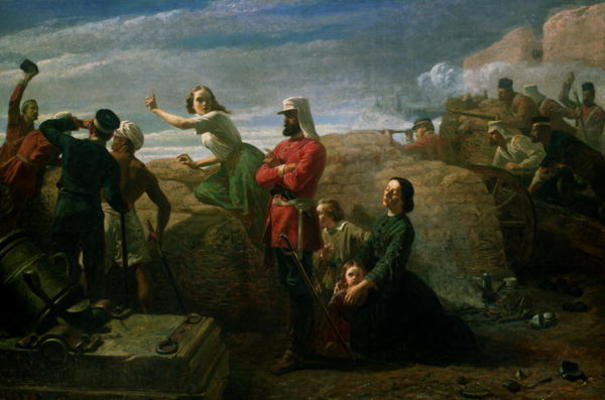
SAG56057 Jessie’s Dream (The Relief of Lucknow), 1858 (oil on canvas); by Goodall, Frederick (1822-1904); © Sheffield Galleries and Museums Trust, UK; English, out of copyright
On December 10th 1857 a curious report appeared in the Jersey Times. The report pertained to the events in far away Lucknow, India. The report told of a highland lass, Jessie Brown. The fiancee or wife of a subaltern, she had indefatigably cared for and cheered the beleaguered British contingent in Lucknow throughout the tortuous summer. Her ministrations and her good cheer had kept the men fighting even when despair seemed normal. All this however, was simply background. What the report focussed on was a dream Jessie had had. It was a dream that saved the British in Lucknow.
Lucknow had been in the British news since the summer that year. In May, some of the East India Company’s native troops had mutinied. Killing or imprisoning their British officers, the troops had hoped to restore the grand Mughal Empire. The aging titular Emperor Bahadur Shah Zafar, a mild-mannered poet, was virtually forced to assume to mantle of leadership by the rebellious Company troops.
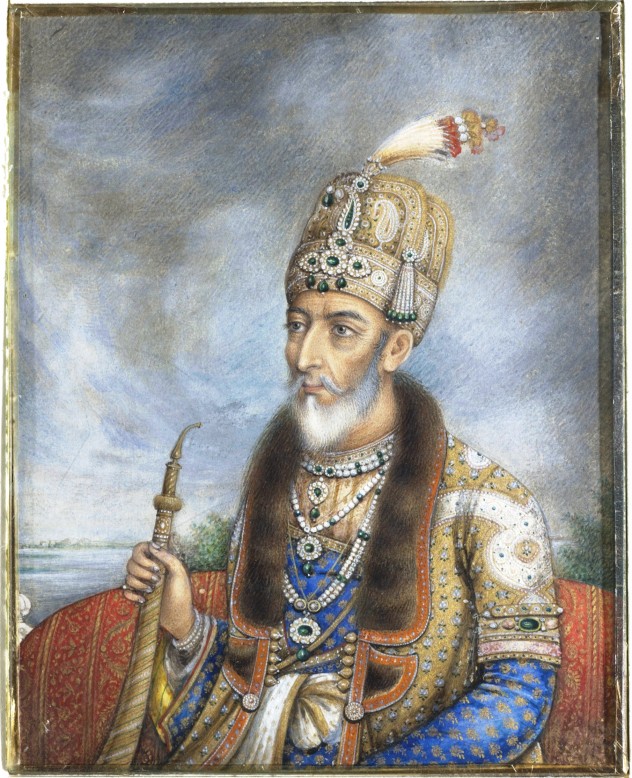
Alam Panah, Al-Sultan Al-Azam, Padshah-e-Ghazi, Sahib-i-Qiran, Shahanshah, Al-Khaqan, Al-Mukarram, Zillullah Mirza Abu Zafar Sirajuddin Muhammad Bahadur Shah Zafar
Lucknow had emerged as one of the pre-eminent cultural centres in the declining years of the Mughal Empire. Its kings, though technically vassals of the Emperor of Delhi, since the 18th century had become independent for all practical purposes while keeping alive the fiction of Mughal suzerainty. In February 1856, the Company violated sovereign treaties of alliance and deposed the king of Lucknow, Nawab Wajid Ali Shah and added his considerable kingdom to the Company’s territories. This was one of the most important reasons for the mutiny the following summer.
While Bahadur Shah in Delhi was a reticent leader of the rebellion, in Lucknow one of Wajid Ali’s wives, Begum Hazrat Mahal had the deposed king’s teenaged son, Birjis Qadir, crowned king. Troops and the populace rallied in support of the boy-king and Lucknow became symbol of resistance to Company rule. British troops and civilians retreated into the Residency Building even as the city passed out of their control. Months passed and British troops could not enter the city to relieve their cornered countrymen in the Residency. In the meantime supplies dwindled, illness broke out and the constant military skirmishes on the walls of the Residency depleted British numbers.
Finally, in late September a Company army under the command of the Bible-thumping, Major General Henry Havelock, broke through Lucknow’s defences and managed to reach the besieged British contingent. Having reached the Residency however, the relieving army to its chagrin realized that their casualties had been so heavy that though they had made it into the Residency they probably could not make it out again. A second siege thus ensued.
Even as Havelock died of dysentery and Major General Sir James Outram assumed command, the British were once more stuck in the Residency, though this time with more troops and supplies. It was finally by late November and in the face of resolute resistance from the rebel troops that the British were eventually able to regain control of Lucknow and finally relieve the besieged. The Jersey Times report appeared right after this second relief of Lucknow. The tide of battle seemed to be turning in favour of the British, but there was still uncertainty about the fate of the British power in Hindustan. Despite the relief, much of the city and the region remained in the control of troops loyal to Birjis Qadir and Bahadur Shah throughout the winter of 1857.
It was in this uncertain light of battle that readers of the Jersey Times first read of Jessie’s dream. It was reported that in the final days of the siege, exhausted from the months of toil and poor food, Jessie Brown had finally fallen victim to a vicious fever. Her illness sapped the British morale even further and the fighters began to give into despair and contemplate surrendering to the Hindustanis. Yet, just as they were about to act on their despair, Jessie screamed out “Dinna ‘ye hear it?” The surprised soldiers hadn’t heard anything and were surprised. But in her fevered delirium Jessie continued to insist that she had heard bagpipes.
Though none else heard it, the troops took heart and decided to continue fighting. The next day, Havelock led the 78th Highlanders into Lucknow and relieved the siege. Had it not been for Jessie’s miraculous premonitory dream, the British would have given up and Havelock’s efforts would have been in vain. The story struck a chord. It was endlessly reproduced in prose, drama, verse, sheet music, paint, porcelain and many other media. The story appeared in one form or the other in America, France, Germany and perhaps in many other places.
The emergent commodity culture drove the narrative multiplication and the media diversification. But with the multiplication and diversification there also came a political pluralization. Some of the narratives clearly displayed anti-colonial sentiments. Others used it to articulate more subtle and local political and aesthetic agendas. For the next half a century, the Highland lassie and her mystic dream continued regale and insinuate many a haunting tune to an ever-different listener. Should you too want to hear her tunes, you may find her here.

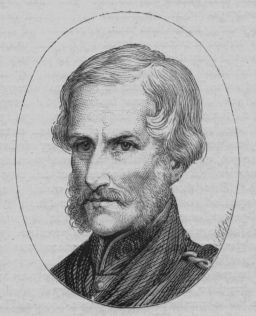
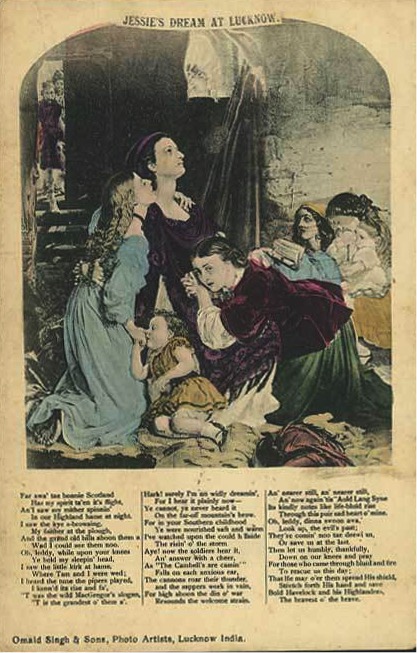
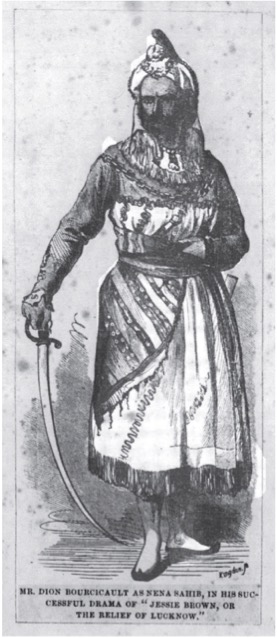
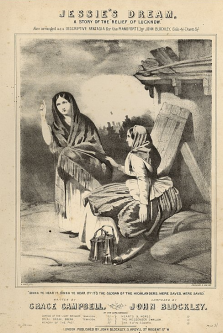
Good article and nice, and I love
May I ask if you personally have any connections to India and the mutiny which occurred? If so can I get your opinion on whether or not you believe that the Indian mutiny was the first war of independence?
Thanks for your comment. I am Indian, but beyond that have no personal connection to the Mutiny/ Rebellion. The question of it being the First War of Independence is a tricky one. Personally, I do not feel we should call it that because a) large parts of India remained uninvolved. Some parts, such as the Punjab, were even active in quelling it. b) The rebels wanted to reinstate the old Mughal Empire, not create a new nation-state.
Thank you so much for your response. Very helpful.
May I also please ask for some of the sources/evidence you used to come to your conclusion?
The two points I make are basic facts available in any scholarly historical work. Unfortunately however, scholarly histories are increasingly drowned on the internet by amateur and deliberately biased writing masquerading as learned opinion. For a good scholarly discussion by an eminent Indian historian you can see Sekhar Bandopadhyay’s From Plassey to Partition: A History of Modern India (Hyderabad: Orient Longman, 2006), Chapter III.
Once again, thanks a lot. You’re a great help.
Good morning all,
I accidentally stumbled on these posts and taking the unsolicited priviledge to add my tuppence.
1. William Dalrymple’s LAST MUGHAL provides an interesting insight to the mutiny which in india is known as the first war of Independence
2. Wil spents lot of his time in India; as far as I know one of his great uncles was some how connected with the Blackhole of Calcutta (many moons ago , he did write to me about this, but then I moved on ). He might guide Nick to lot of archives on the Mutiny.
3. Christopher Siebbert’s ” Grand Mutiny ” is a well researched book and very nicely written ( not a high and dry scholarship, which will cause you to doze off). Unfortunately , I read this book much after I visited some of the battlegrounds in MP ; else these work related visits could have been eventful ones, instead of the usual dry and drab trips.
4. Recently, I was reading a Bengali book called “Hutum Panchar Noksha” which dealt with life in Calcutta around 1850-1860. This work mentions passingly about the incident in Barrackpore and staes all ifficers including the secretaries took off on the berthed ships on the banks of Hooghly .
Mr Sunil Ganguly’s Shei Shomoy is based on the aforesaid book , including verbatim ( probably a very strong word) representation.
There are lots of diaries/journals maintained by British women who were in India with their partners or parents, mostly pre 1857; I have read a couple, the fluid narratives keep you spell bound
Anyhow, enough of unwarranted lectures.
You all have a wonderful day
Probal
Very interesting and informative article.Thank you for sharing this info.